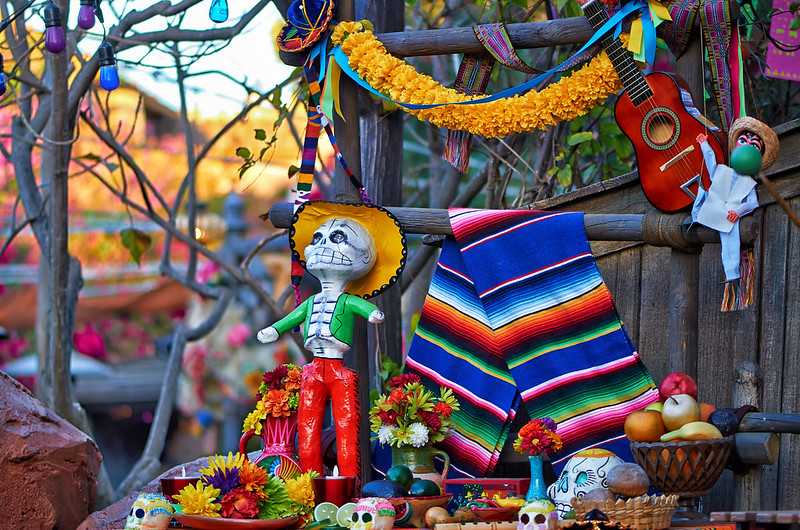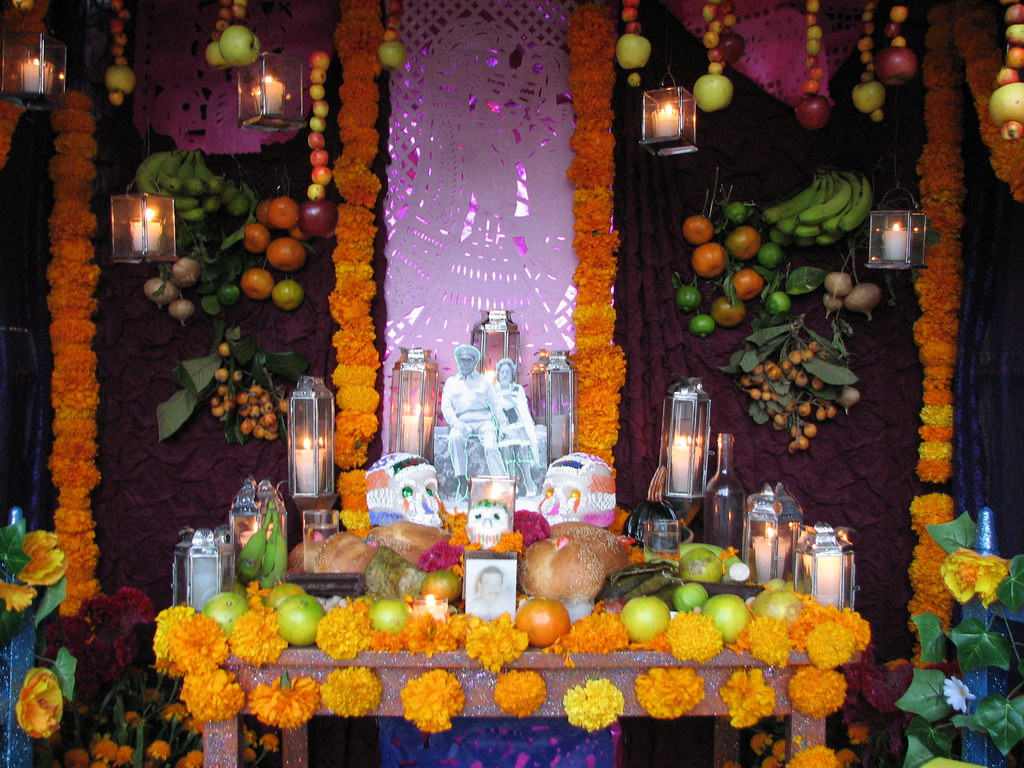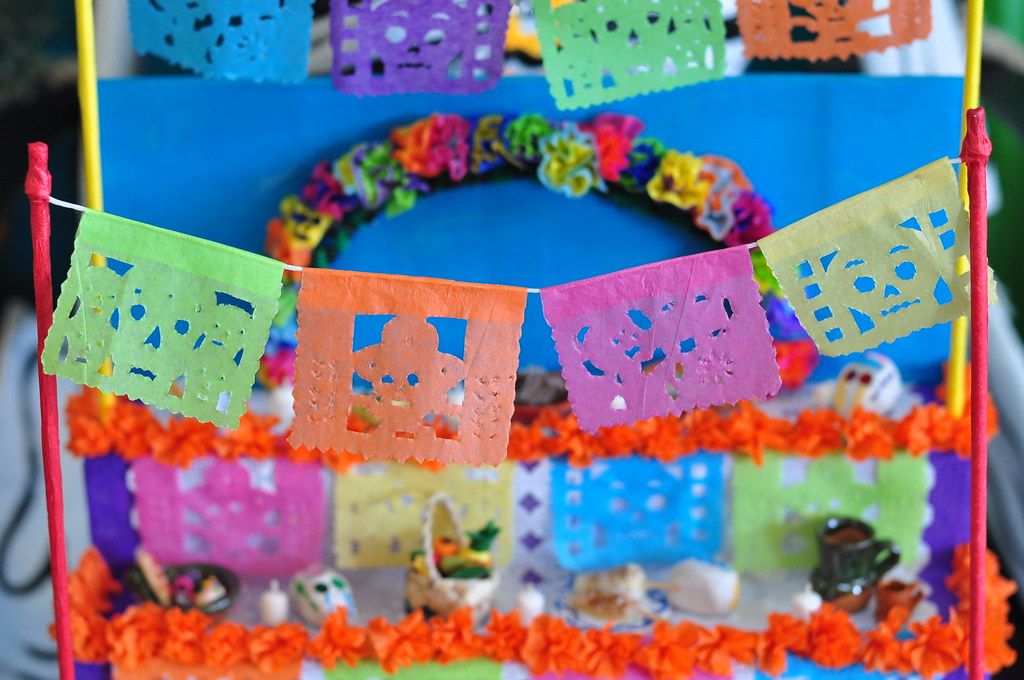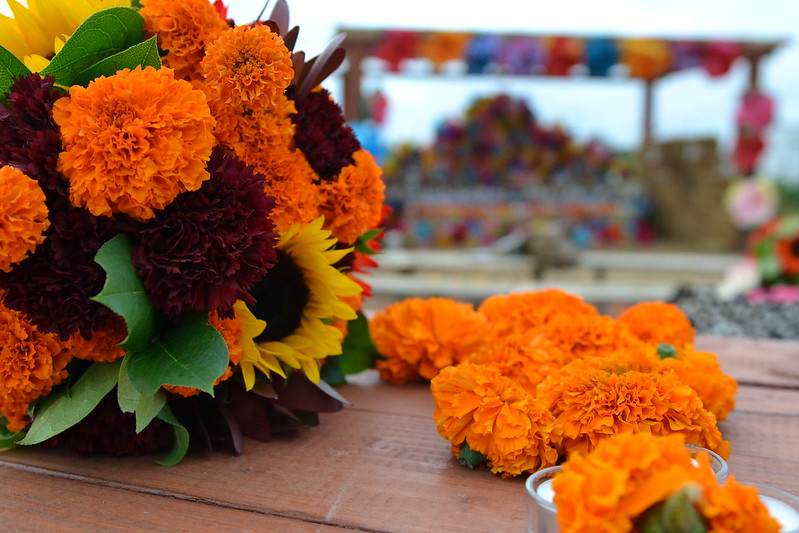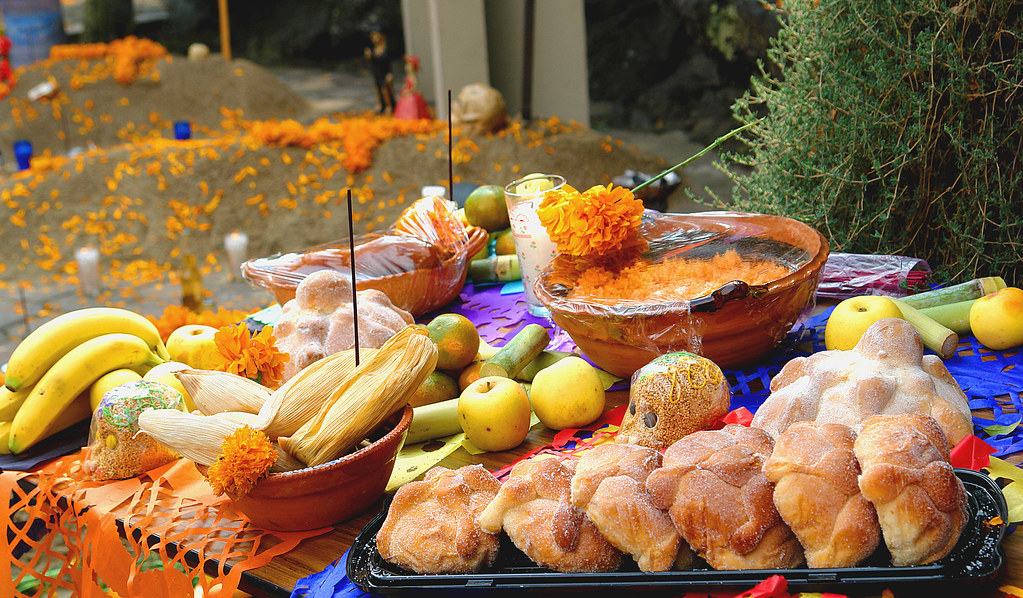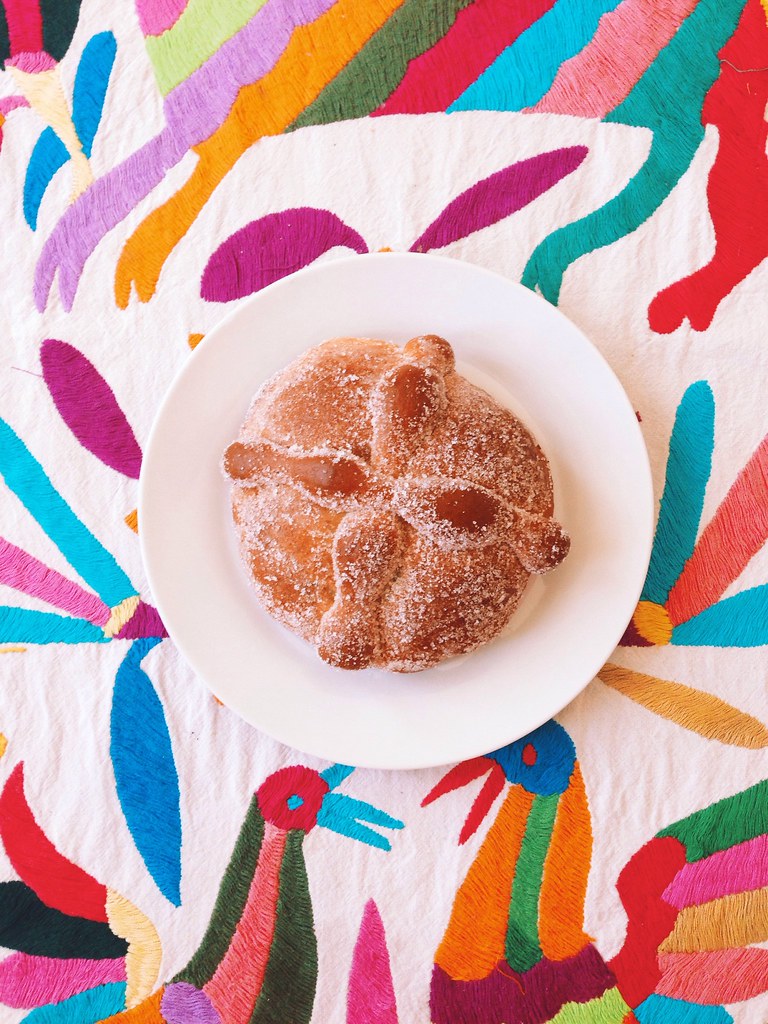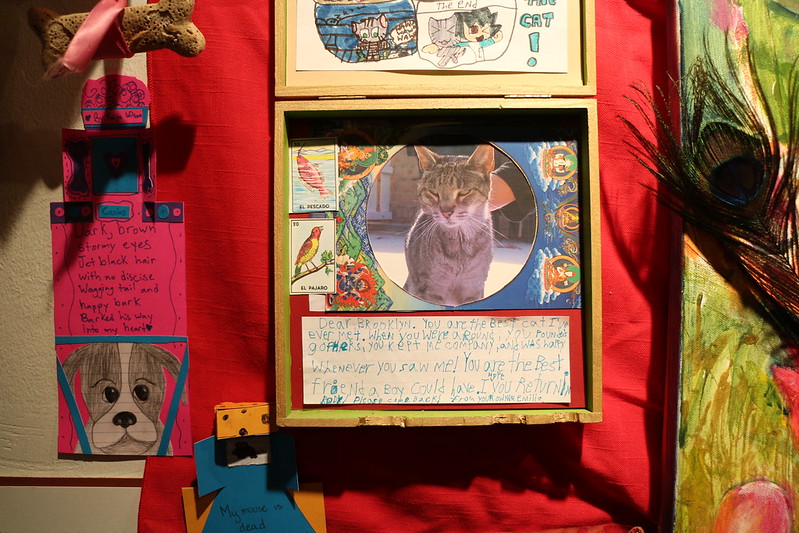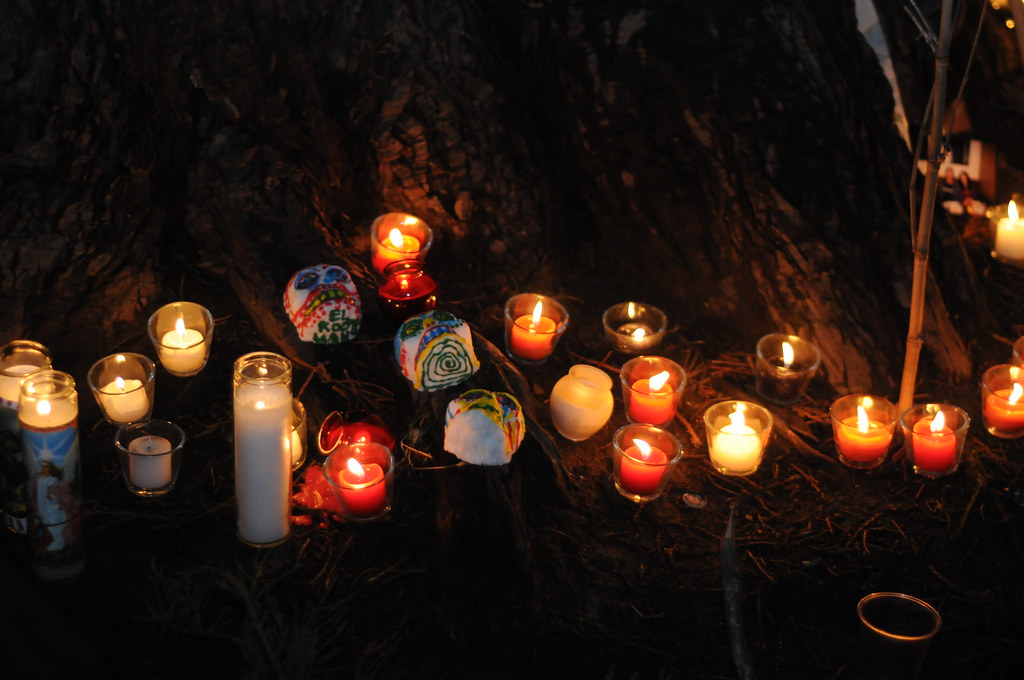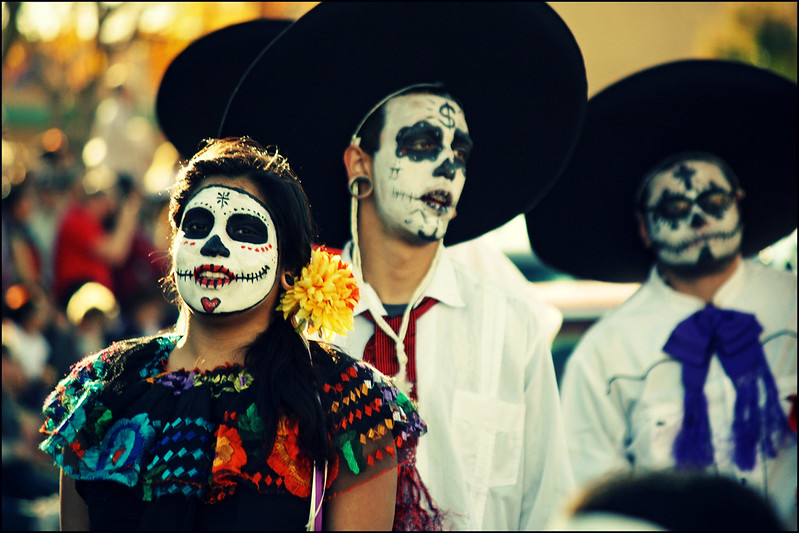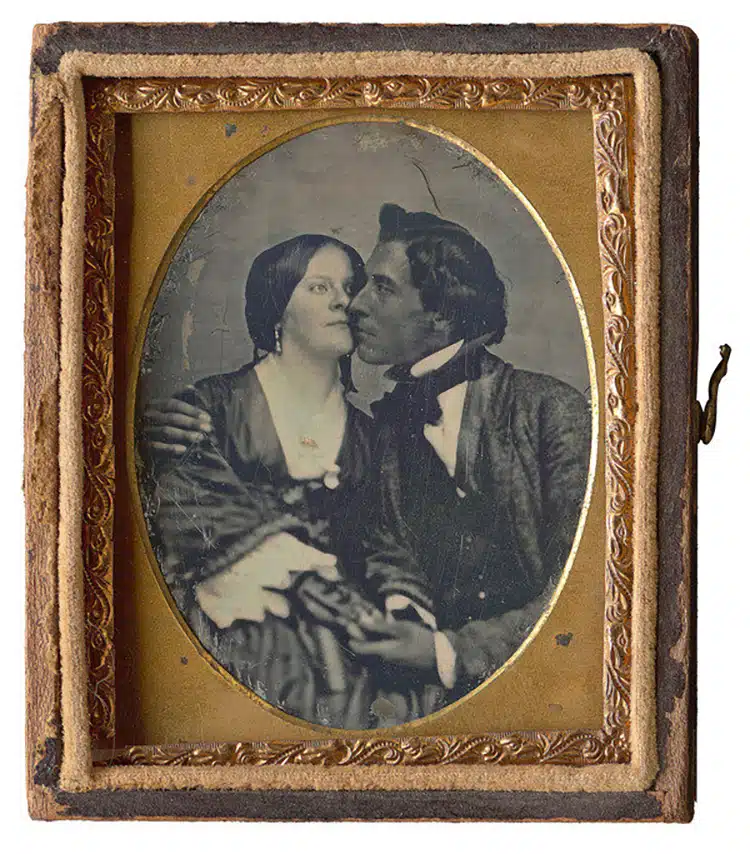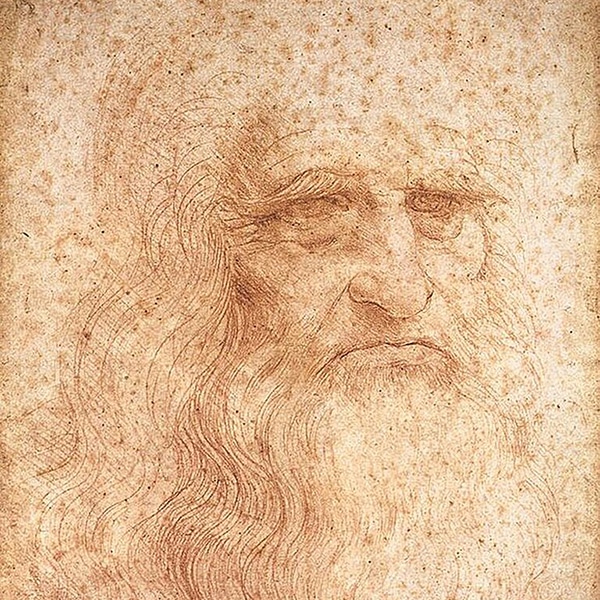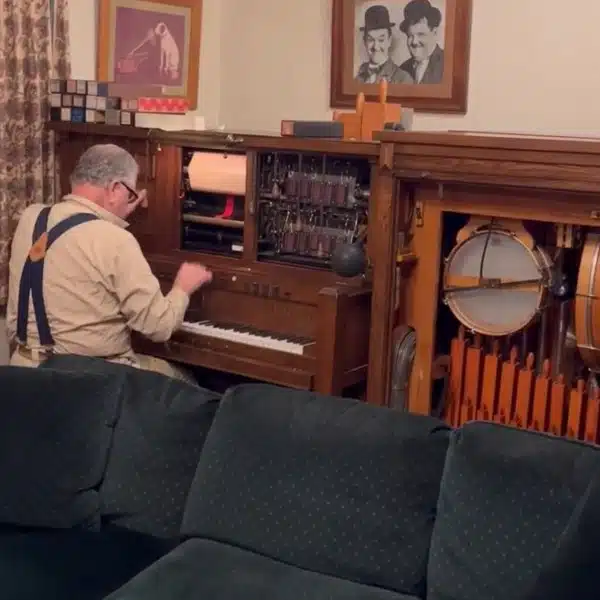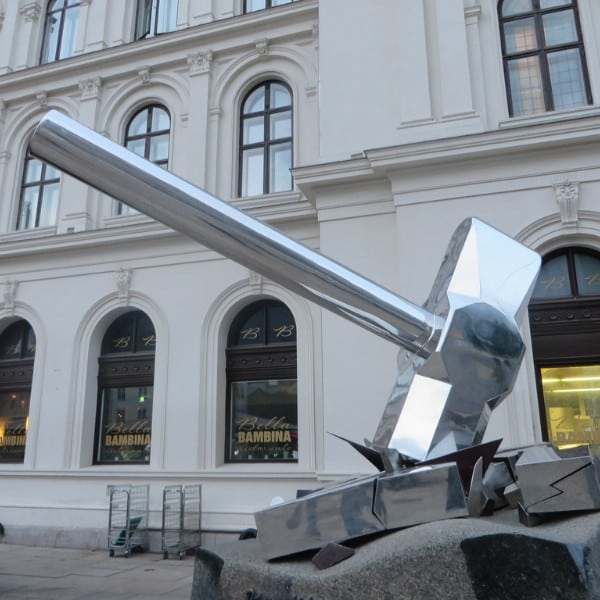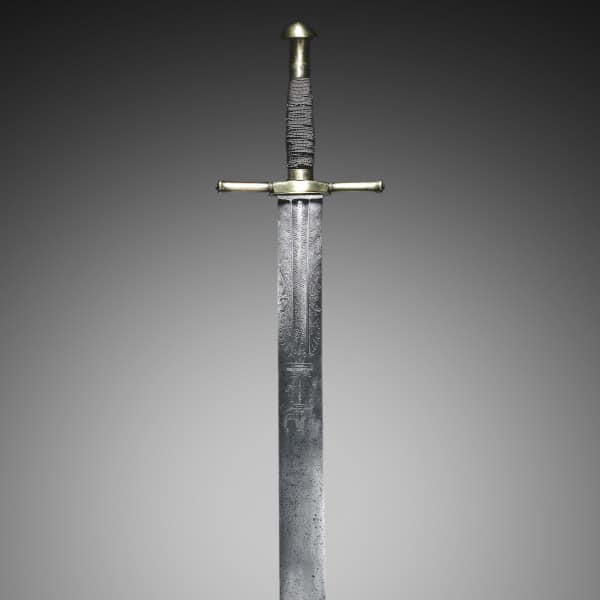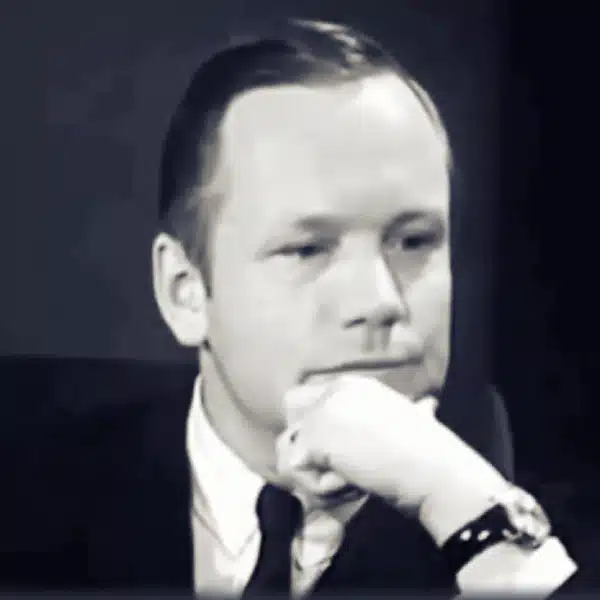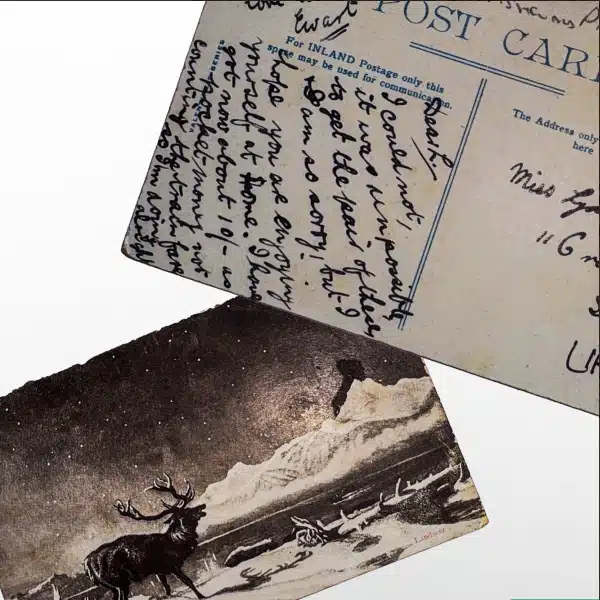Throughout history, cultures across the globe have adopted creative ways to deal with death. In ancient China, they crafted funerary sculptures to fill complex mausoleums. During the Dutch Golden Age, artists touched on mortality in their memento mori still life paintings. And, in modern Mexico, people celebrate Día de los Muertos, a colorful holiday dedicated to the dearly departed.
Though this festival has evolved over centuries, it remains one of Mexico's most historically and culturally important events. Here, we explore the vibrant history and distinctive traditions of the Day of the Dead in order to understand its enduring significance.
What is Día de los Muertos?
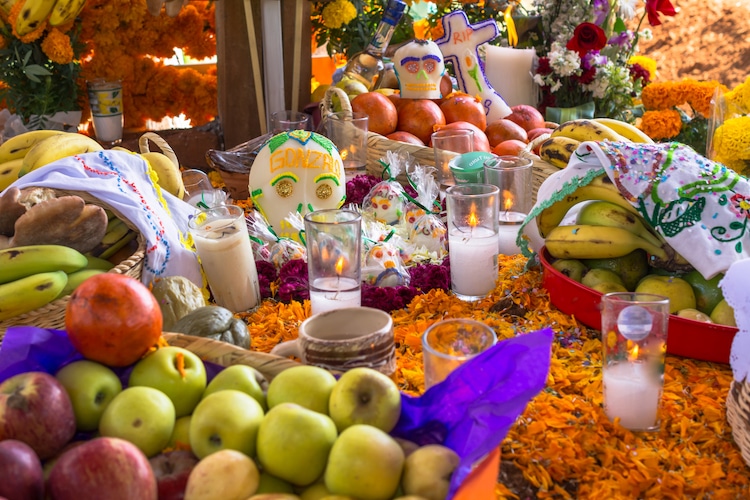
Photo: Stock Photos from Jose de Jesus Churion Del/Shutterstock)
Día de los Muertos (also known as Día de Muertos) is a Mexican holiday. While many misconstrue the holiday as Mexican Halloween due to their time proximity, the two are entirely different celebrations. Día de los Muertos occurs annually on October 31, November 1, and November 2, and is held to honor those who have died.
Specifically, the term Día de los Muertos traditionally refers to November 2, when deceased adults are commemorated. November 1—a day known as Día de los Inocentes (“Day of the Innocents”) or Día de los Angelitos (“Day of the Little Angels”)—is reserved for infants and children who have passed away, while October 31 is a day of preparation. However, “Día de los Muertos” is also commonly used to denote the entire three-day fete.
Though the specific traditions and rituals involved with the Day of the Dead vary from region to region, the celebration generally revolves around the creation of an altar, which participants fill with stylized skeletons, food, and other offerings. These altars are dedicated to deceased relatives and loved ones and are created to aid them in the afterlife—a concept that has always been central to the holiday.
History of the Holiday
Pre-Columbian Roots
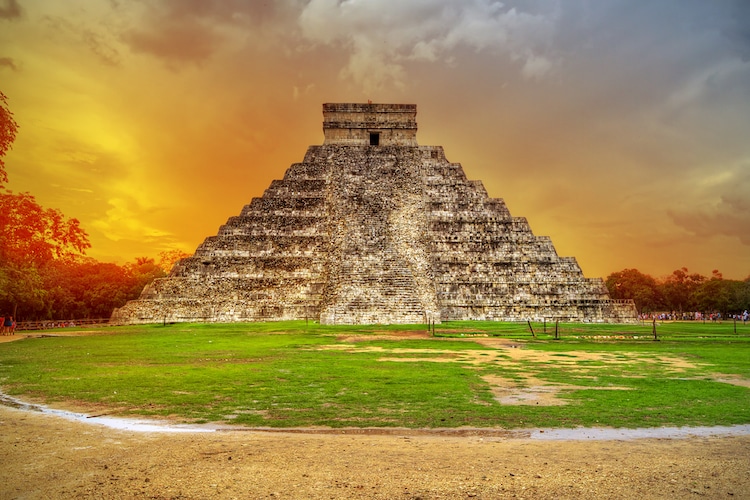
Photo: Stock Photos from Patryk Kosmider/Shutterstock
Like many modern holidays, The Day of the Dead has been shaped over the course of hundreds of years. Rites and rituals reminiscent of The Day of the Dead can be traced back to the Post-Classic period (1300 to 1521) in Pre-Columbian Mexico. During this time, the Aztec Empire flourished, bringing with it a treasure trove of traditions.
Like many Mesoamerican peoples, the Aztecs viewed grief as disrespectful to the dead. Rather than mourn the loss of loved ones, they opted to celebrate their spirits, culminating in the earliest edition of the Day of the Dead.
During this month-long festival, the Aztecs welcomed visits from beyond the grave and paid homage to Mictēcacihuātl, the goddess of the underworld. Fittingly, this mythological figure has historically been known as “The Lady of the Dead.”
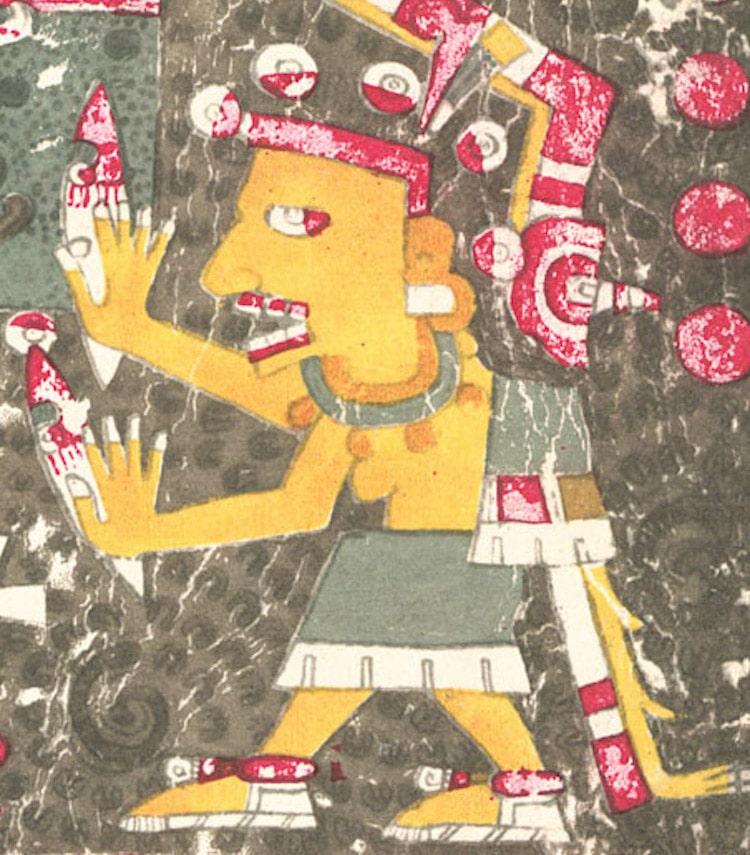
Mictēcacihuātl depicted on the Codex Borgia manuscript (Photo: Wiki Art, Public domain)
Originally, this celebration occurred in August, the ninth month of the Aztec calendar. However, Catholic influences brought by conquistadors in the 16th century prompted a shift to its present date.
Catholic Influences
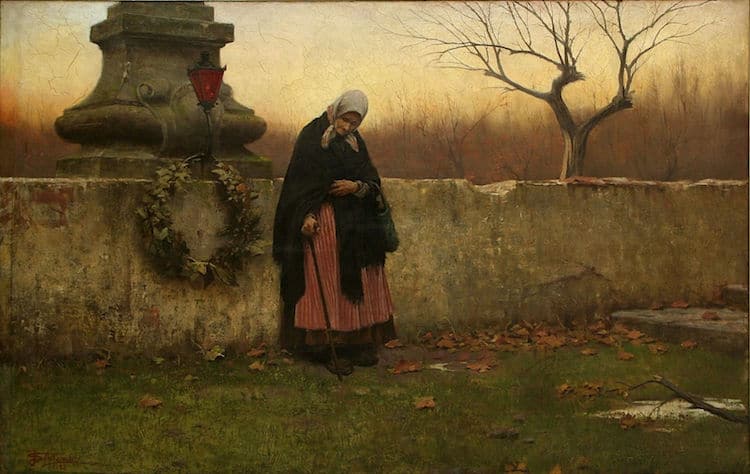
Jakub Schikaneder, “All Souls' Day,” 1888 (Photo: Wikimedia Commons, Public domain)
Following Spanish colonization, the Day of the Dead was gradually influenced by another holiday honoring those who have died: Allhallowtide. Inspired by Pagan harvest festivities, this three-day fete comprises All Hallow's Eve, or Halloween, on October 31, All Saints' Day on November 1, and All Souls' Day on November 2.
This Catholic influence altered the religious aspect of the festival, though it remains rooted in Aztec mythology. For example, La Calavera Catrina—a secular female skeleton character that has come to symbolize Día de los Muertos—was inspired by Mictēcacihuātl.
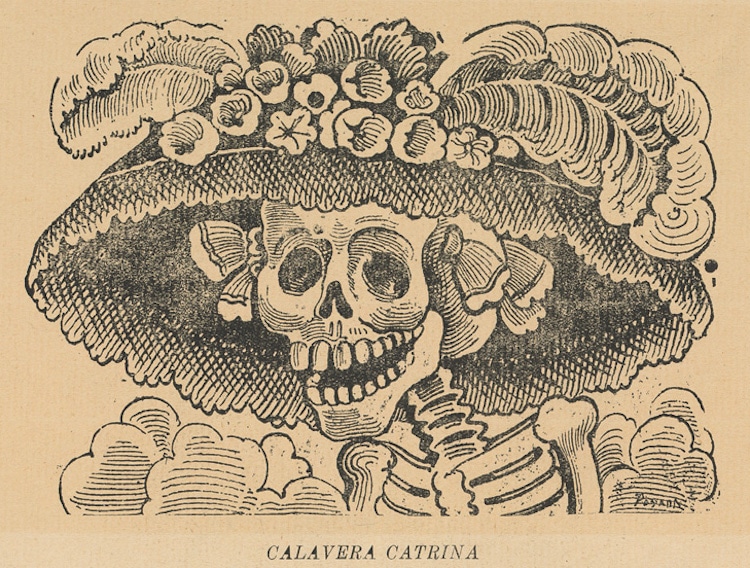
José Guadalupe Posada, “Calavera de la Catrina (Skull of the Female Dandy),” 1913 (Photo: Wikimedia Commons, Public domain)
The Mexican practice of leaving offerings on the ofrenda is similar to the medieval tradition in Spain of leaving pan de ánimas (spirit bread) on the graves of loved ones.
Ultimately, a blend of Catholic and Pre-Columbian influences is evident in the festival and is made most prominent by the ofrenda.
The Ofrenda
On the Day of the Dead, an ofrenda, or offering, is placed on a ritual altar. Central to the celebration, Day of the Dead altars are found in private homes, cemeteries, and churches and welcome the dead back to earth for the three-day event.
Though often compared to Halloween, the Day of the Dead does not revolve around mischief or morbidity. Instead, it focuses on celebrating the dead—an aesthetic illustrated by its festive decorations, spirited food and drink, respectful photographs, symbolic candles, and thoughtful trinkets.
Decorations
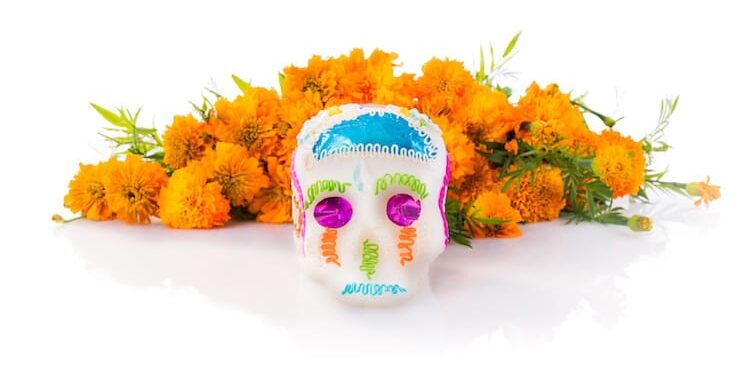
Photo: Stock Photos from Fer Gregory/Shutterstock
Decorations are intended to honor those who have passed in a jubilant way. To achieve this, they often dazzle with bright colors and incorporate playful skull motifs.
Papel Picado
Made out of Technicolor tissue paper, papel picado (or “chiseled paper“) is a flag-like folk art that evolved from a Pre-Columbian version made out of tree bark, which was used by the Aztecs to compile codices and adorn religious sites.
Cempasúchil
Ofrendas also often feature freshly cut Cempasúchil, bright orange and yellow marigolds intended to cheer up the dead with their brilliant colors and sweet scent. During cemetery visits, typically at twilight or late in the evening on November 1 and 2, families decorate gravesites with these flowers and other offerings.
Sugar Skulls
Colorful skulls made of molded sugar paste (known as calaveras) are another staple of Day of the Dead decor. These sugar candies are exquisitely decorated with motifs like flowers and spiderwebs and often feature names of the dead written in foil or icing on their foreheads. Some calaveras feature inedible adornments, like beads, sequins, and feathers, while others are made to be eaten.
Calaverita
Another celebratory event that transpires on the Day of the Dead is the hunt for a calaverita. On November 1, Children dress up in costumes and go door-to-door, asking strangers for a calaverita, which can come in the form of sweets or money. Though compared to Halloween, this tradition does not come with the element of mischief if no treat is exchanged.
Food and Drink
A Day of the Dead altar is typically covered in edible offerings, including the favorite foods enjoyed by the deceased person in their previous life. Additionally, most ofrendas will also include pan de muerto and spirited drinks.
Pan de Muerto
This “bread of the dead” is a type of sweet roll. It is adorned with bone-like decorations and is typically flavored with anise seeds and orange zest. Like other offerings of food, it is believed that the visiting spirits absorb and enjoy the essence of the Pan de Muerto, though it is the living who physically consume it.
Spirited Drinks
To help the spirits relax and enjoy the festivities, people will often offer alcoholic beverages like Tequila, Mezcal, and Pulque, a drink made out of fermented agave sap.
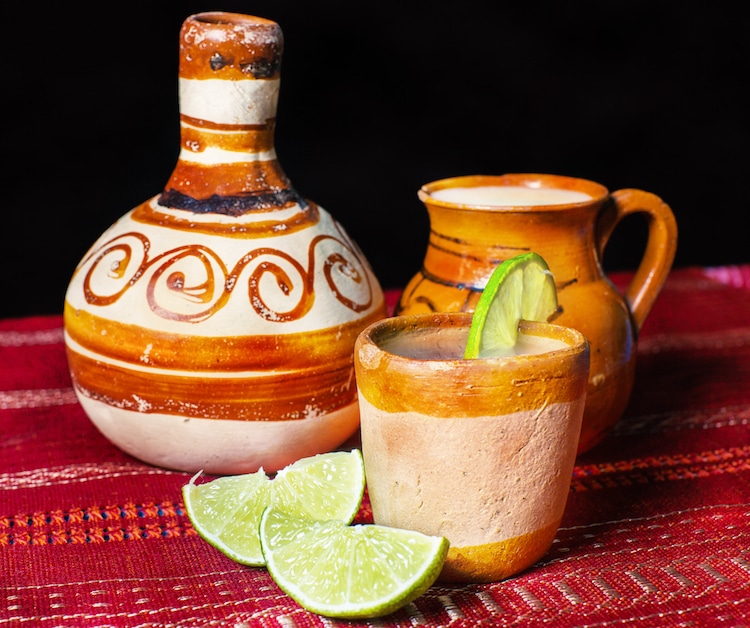
Pulque (Photo: Stock Photos from Natalia Gurieva/Shutterstock)
Photographs
Most altars feature photographs that identify who each ofrenda is dedicated to. Though often dedicated to family members, the subject can also be a friend, celebrity, or even a beloved pet.
Candles
Candles are used to memorialize the dead and, symbolically, to help them find their way to the altar. Sometimes, they are placed in a cross formation, both to evoke the crucifix and to serve as a compass rose so they can orient themselves. Other times, however, their arrangement is ambiguous.
Trinkets, Toys, and Other Objects
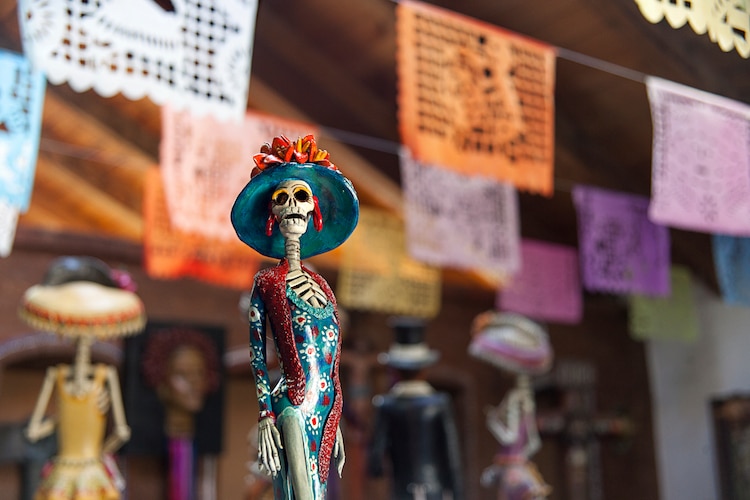
Day of the Dead in Michoacan, Mexico (Photo: Stock Photos from DAVID PANIAGUA GUERRA/Shutterstock)
To add a personal touch to the altar, participants may add objects owned or previously enjoyed by the dead, including clothing, cigarettes, and toys. Statuettes of saints and other religious figures are popular, as are papier–mâché and clay figurines of calacas, or skeletons.
Literary Calaveras
During the festivities, death is regarded with humor by Mexicans, and literary calaveras are the prime example of this. These mocking epitaphs are written in verse, and it's common for children to compose them or to find them in the press. But rather than honor a deceased person, they tell the story of a live person encountering the grim reaper. In the end, the protagonist always meets their demise in a farcical fashion, which usually has to do with something specific to their lifestyle.
Día de los Muertos Today
The Day of the Dead remains prevalent in contemporary culture, both in Mexico and beyond, and is also celebrated in the United States, with significant influence, particularly in Los Angeles. In addition to making alters and attending city-wide festivals, people today often celebrate Día de los Muertos by making themselves up to look like Calaveras, a look that has also inspired countless Halloween costumes. The holiday's presence in popular culture is evident through Mattel's releases of Día de los Muertos-themed Barbie dolls in 2020 and 2022.
In 2008, the holiday was even added to UNESCO's Representative List of the Intangible Cultural Heritage of Humanity, ensuring its enchanting legacy for years to come and drawing attention to its native roots. “This encounter between the living and the dead,” UNESCO explains, “affirms the role of the individual within society and contributes to reinforcing the political and social status of Mexico’s Indigenous communities.”
Disney Pixar's Coco
In 2017, Disney Pixar released an animated feature titled Coco that celebrates the Day of the Dead. Rolling Stone‘s Peter Travers called the film a “loving tribute to Mexican culture.” This vibrant feature-length film includes various traditions, drawing from different practices of the festival. Some recognizable cultural and artistic elements include calaveras, ofrendas, and alebrijes.
This animated film provided a platform for Día de Muertos to a global audience. This, alone, has had an immeasurable impact on the world. The film was positively received by critics and audiences alike. In fact, Coco became the highest-grossing film of all time in the Mexican market.
Day of the Dead Parade
Every year, in the last weekend of October, Mexico City hosts a large parade to celebrate the Day of the Dead. Thousands of performers dress up as catrinas and catrines, who dance and carry cheerful papier-mâché skeletons. The colorful parade also pays tribute to the many facets of Mexican culture, from its Pre-Columbian legacy to artists such as Frida Kahlo.
While this cavalcade certainly honors a centuries-old tradition, its inception is quite recent—its origins lie in a Hollywood film. The James Bond movie Spectre (2015) shows the famed agent saving the day at a big Dia de Muertos festival in Mexico City. Although it only existed in the film, the local government was drawn to the idea of having parades like the one shown in the movie, leading to what has now become a holiday staple in the Mexican capital.
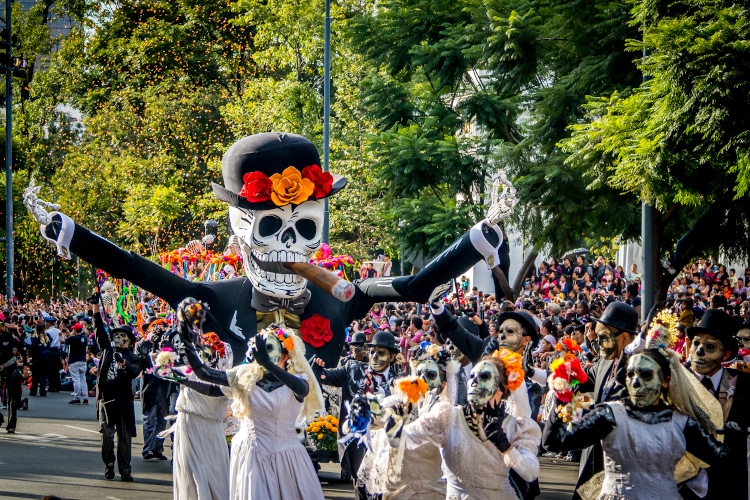
Photo: diegograndi/Depositphotos
Frequently Asked Questions
When is the Day of the Dead?
The Day of the Dead is spread across three days—October 31, November 1, and November 2. Día de los Muertos (“Day of the Dead”) traditionally refers to November 2, when deceased adults are commemorated. November 1 is a day known as Día de los Inocentes (“Day of the Innocents”) or Día de los Angelitos (“Day of the Little Angels”), which is reserved for infants or children who have passed away, whereas October 31 is a day of preparation.
What is the Day of the Dead?
The Day of the Dead (or Día de Muertos in Spanish) is a Mexican holiday dedicated to those who have died.
How is the Day of the Dead celebrated?
Día de los Muertos does not revolve around mischief or morbidity. Rather, Day of the Dead celebrations focus on celebrating those who have passed—an aesthetic illustrated by its festive decorations, spirited food and drink, respectful photographs, symbolic candles, and thoughtful trinkets.
This article has been edited and updated.
Related Articles:
10 Giant Painted Skulls Pop Up on the Streets of Houston for Day of the Dead
The History of Halloween: Exploring the Age-Old Origins of the Enchanting Holiday
Beauty Artist Turns “Skull Face” Makeup into a Gorgeous Art Form
10 Famous Folk Artists Who Carry on the Tradition of Creative Expression
